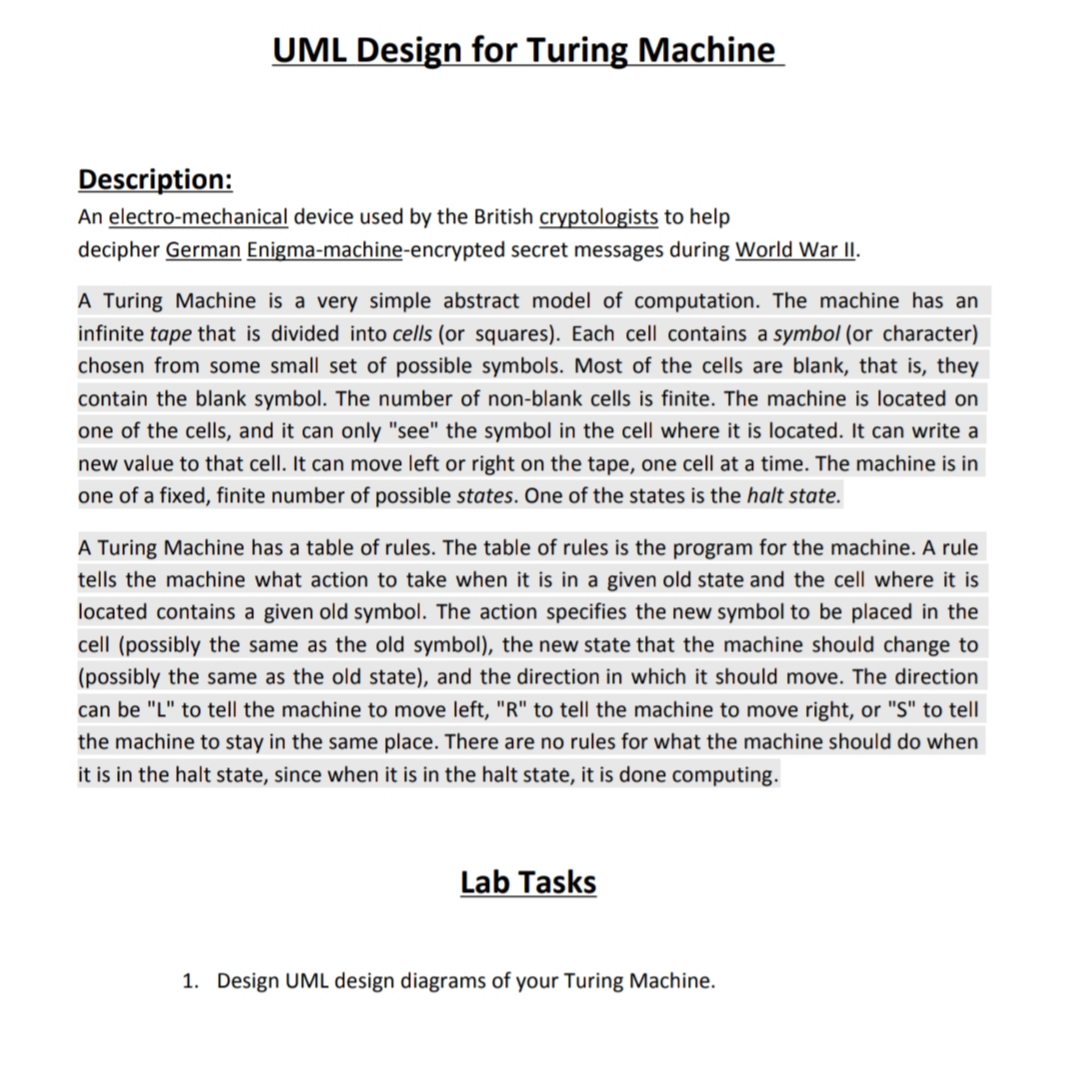1. Design UML design diagrams of your Turing Machine.
C++ Programming: From Problem Analysis to Program Design
8th Edition
ISBN:9781337102087
Author:D. S. Malik
Publisher:D. S. Malik
Chapter15: Recursion
Section: Chapter Questions
Problem 17PE
Related questions
Question

Transcribed Image Text:UML Design for Turing Machine
Description:
An electro-mechanical device used by the British cryptologists to help
decipher German Enigma-machine-encrypted secret messages during World War II.
A Turing Machine is a very simple abstract model of computation. The machine has an
infinite tape that is divided into cells (or squares). Each cell contains a symbol (or character)
chosen from some small set of possible symbols. Most of the cells are blank, that is, they
contain the blank symbol. The number of non-blank cells is finite. The machine is located on
one of the cells, and it can only "see" the symbol in the cell where it is located. It can write a
new value to that cell. It can move left or right on the tape, one cell at a time. The machine is in
one of a fixed, finite number of possible states. One of the states is the halt state.
A Turing Machine has a table of rules. The table of rules is the program for the machine. A rule
tells the machine what action to take when it is in a given old state and the cell where it is
located contains a given old symbol. The action specifies the new symbol to be placed in the
cell (possibly the same as the old symbol), the new state that the machine should change to
(possibly the same as the old state), and the direction in which it should move. The direction
can be "L" to tell the machine to move left, "R" to tell the machine to move right, or "S" to tell
the machine to stay in the same place. There are no rules for what the machine should do when
it is in the halt state, since when it is in the halt state, it is done computing.
Lab Tasks
1. Design UML design diagrams of your Turing Machine.
Expert Solution
This question has been solved!
Explore an expertly crafted, step-by-step solution for a thorough understanding of key concepts.
This is a popular solution!
Trending now
This is a popular solution!
Step by step
Solved in 2 steps with 2 images

Knowledge Booster
Learn more about
Need a deep-dive on the concept behind this application? Look no further. Learn more about this topic, computer-science and related others by exploring similar questions and additional content below.Recommended textbooks for you

C++ Programming: From Problem Analysis to Program…
Computer Science
ISBN:
9781337102087
Author:
D. S. Malik
Publisher:
Cengage Learning

Programming Logic & Design Comprehensive
Computer Science
ISBN:
9781337669405
Author:
FARRELL
Publisher:
Cengage

C++ Programming: From Problem Analysis to Program…
Computer Science
ISBN:
9781337102087
Author:
D. S. Malik
Publisher:
Cengage Learning

Programming Logic & Design Comprehensive
Computer Science
ISBN:
9781337669405
Author:
FARRELL
Publisher:
Cengage